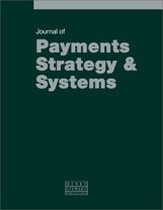Patterns for payment systems integration
Abstract
Regulatory, industry and competitive drivers dictate that payment initiatives within a bank are many and continuous. However, a common situation is that the supporting IT systems have evolved in an ad hoc manner — there are often limited separation of architectural concerns, many tightly-coupled legacy systems and duplication of processing capability. Systems integration complexity is a limiting factor in determining how quickly IT changes can be achieved. These factors detract from a bank’s ability to respond to changes in the business environment. Selecting the appropriate architectural style for payments processing is therefore an extremely important activity. This paper presents architectural patterns for payment systems integration. These enable the selection of optimal architectural solutions for payments processing. Each pattern is described in terms of a number of generic Architectural Building Blocks and their interactions. The general characteristics of each pattern are compared, and the suitability of each pattern in supporting specific business scenarios is presented. The paper also introduces the concept of the Payments Integration Space, which defines the scale of the systems integration problem. This metric is used to illustrate the role of the patterns in reducing complexity. It is shown that two specific patterns, Payments Hub and Payments Service Bus, are candidates for the target end state. Given significant differences in characteristics of the two patterns, it is concluded that a bank must make an early and overt choice about selecting the most appropriate target end state for payment systems integration.
The full article is available to subscribers to the journal.
